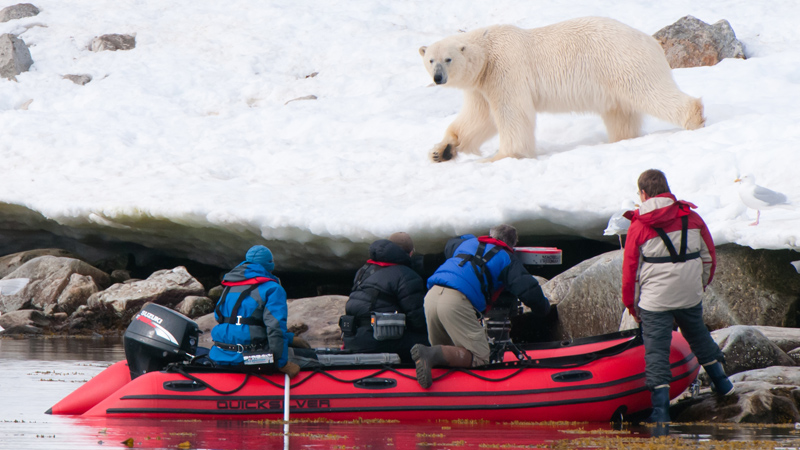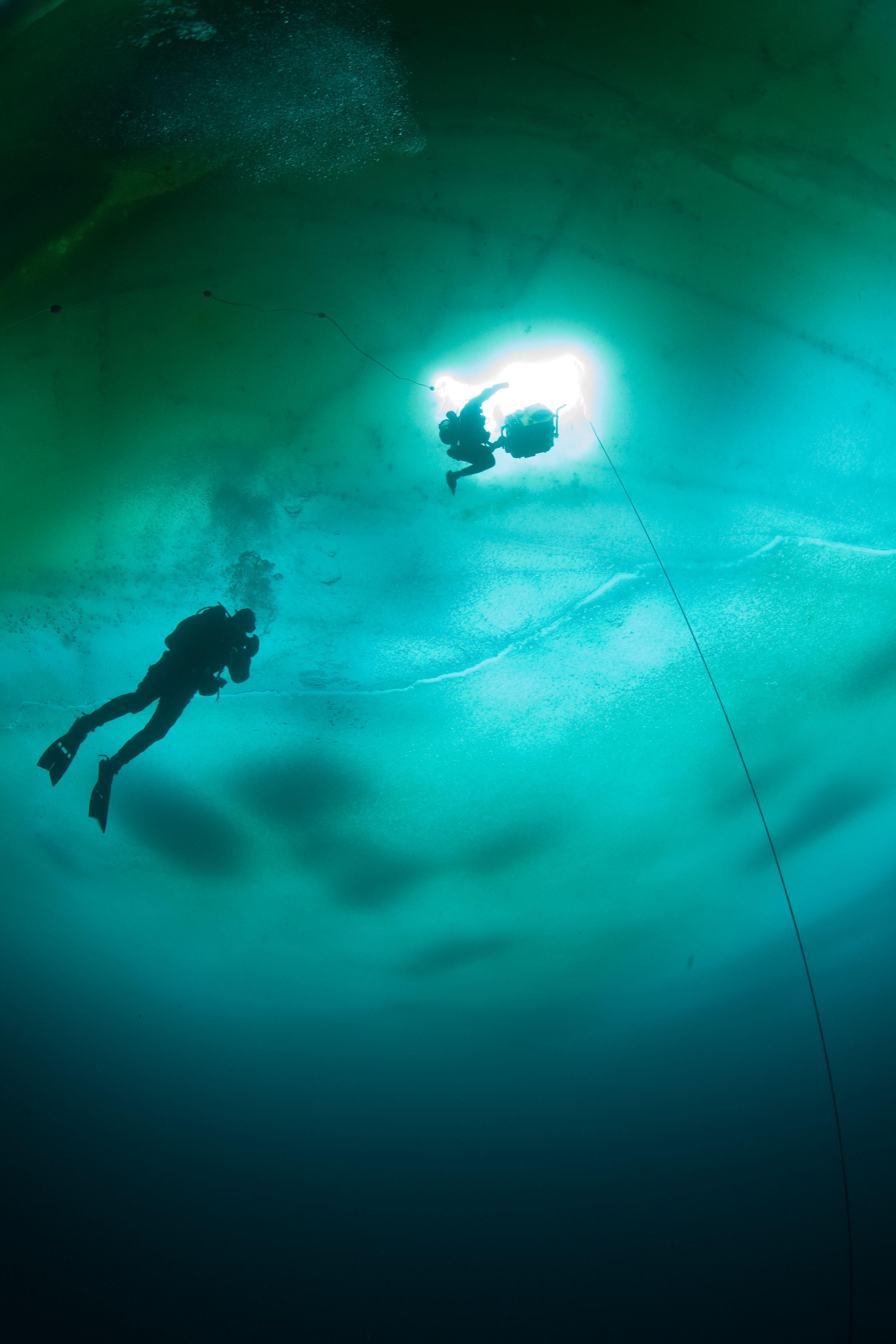One World One Ocean
The bears did not seem to feel threatened by the smaller inflatable boats used by MacGillivray Freeman crews, so they were able to get …

The bears did not seem to feel threatened by the smaller inflatable boats used by MacGillivray Freeman crews, so they were able to get exceptionally close – too close for comfort, at times. Here, Brad Ohlund and Florian Schulz get a shot of a mother polar bear that shows her beautiful shape and large paws which allow her to grip the ice and distribute her weight evenly.
We had a chance to ask members of our To the Arctic film crew – Director of Photography Brad Ohlund, Camera Assistant Rob Walker, Director Greg MacGillivray, and Screenwriter Steve Judson – about what they saw during the film expedition. Here are some of their observations from the Arctic.
MFF: How close could you get to the bears? Were you ever nervous?
Brad: In a couple of instances in Churchill we were on tundra buggies and the bears would stand up against the platform and we would be inches away. In the photo above at one point we were within 10 feet, and yes, there were times I was nervous. Rob, a MacGillivray Freeman cameraman, almost got his face swatted off.
Rob: Out in the wild not very close. Our guide kept us at a safe distance. On the tundra buggy I got about six inches from the nose of a bear. I was not nervous at all until he took a swipe at me with his paw.
Greg/Steve: About 15 feet away – and yes, we were very nervous.
MFF: How big do polar bears get?
Brad: HUGE
Rob: The largest we saw was about 10 feet tall on his hind legs standing up.
Greg/Steve: The largest males can weigh up to 1500 lbs.




